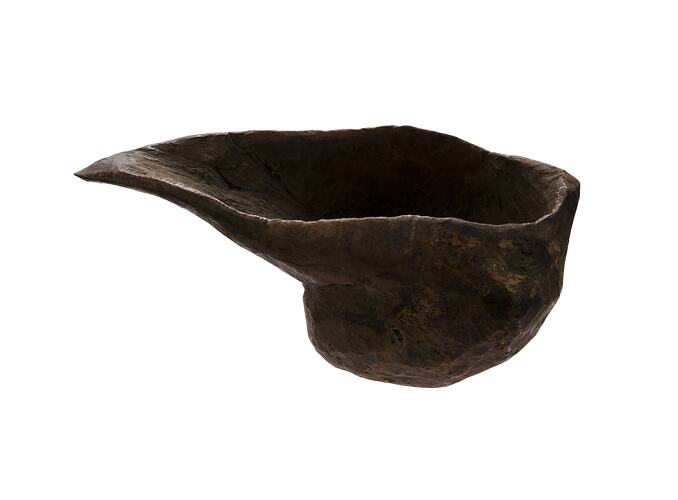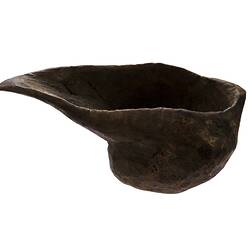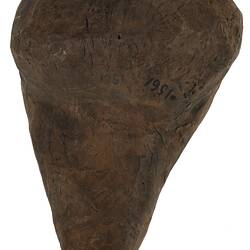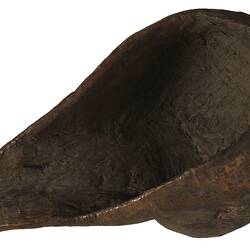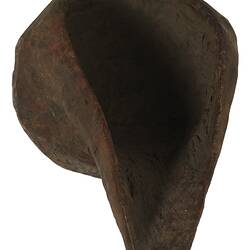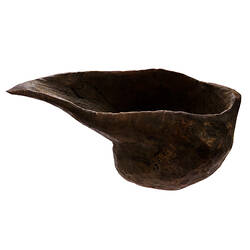Summary
Water is a precious resource across all cultures, and many different shapes of containers were crafted by First Peoples in Victoria to collect, carry and store it.
The no-bintarno is a drinking vessel. It is used to scoop water out of creeks or from large wooden water-storage vessels called tarnuk bullarto. They were also used to prepare beverages from the nectar of honeysuckle and other plants. Hollow pieces of reed were used as drinking straws.
The no-bintarno was fashioned from a gnarl growing on the limb or trunk of a gum tree. The inner part was hollowed out by gouging and scraping, using bone or shell scrapers. The gnarls were either cut from the trees or in some cases split from the trees following a lightning strike or grub infestation. A gnarl from a young tree was easier to scrape out as the inner flesh was still pink and soft.
Local Name
No-bintarno
Physical Description
Shoe-shaped drinking vessel from the wood of a gum tree, hollowed out by gouging and scraping.
Significance
This no-bintarno was made around the 1850s and although the clan name recorded by the Museum is 'Yarra' it is likely this refers to the Woi Wurrung peoples of the Kulin Nation who were often called the 'Yarra Yarra Tribe' at this time in history.
Before the invasion of European people in 1835, the Boon Wurrung and Woi Wurrung peoples occupied the Port Phillip area which is now known as greater Melbourne.
The Boon Wurrung and Woi Wurrung peoples continue to live, practice their culture and work on their traditional lands in the Port Phillip area. Aboriginal culture, music and arts is celebrated with the wider Melbourne community on the traditional lands of the Boon Wurrung peoples annually at the Yalukit Wilum Ngargee Festival held in St Kilda.
Today many Aboriginal and Torres Strait Islander groups across Australia continue to make a variety of wooden items using knowledge passed down by their elders over thousands of generations. Gunnai Elder Uncle Albert Mullett emphasises the careful selection of materials in making wooden artefacts to ensure the continuation of abundance;
'We don't disturb the trees but only take a small part of them to make our artefacts.' Uncle Albert Mullett, 2010.
References
Keeler, C. and Couzens, V., (eds) 2010, Meerreeng-An, Here is my Country: The Story of Aboriginal Victoria Told Through Art, p. 143, Koorie Heritage Trust/BPA Print Group.
More Information
-
Object/Medium
Container
-
Maker
-
Cultural Groups
-
Locality
-
Date Produced
-
Date Collected
-
Object Measurements
260 mm (Length), 160 mm (Width), 140 mm (Height)
-
Classification
-
Date Made
-
Maker
-
Clan/Language Group
-
Place Made
-
Indigenous Region
-
Keywords
-
Type of item
-
Discipline
-
Category
-
Collecting Areas
